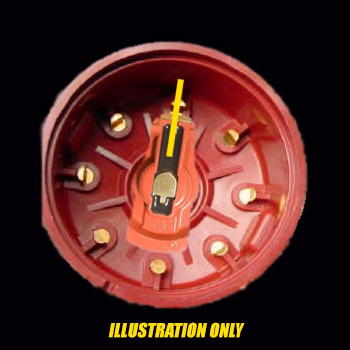Order a Free Catalog
Click Here to request one of Speedway's FREE catalogs!
Here to Help You
To reach our knowledgeable reps:
Call: 800.979.0122 800.979.0122
Order Line (CST)
7am - 10pm - Every Day!
Race and Rod Tech Support
M-Fri 8am - 5pm
Customer Service
M-Fri 8am - 5pm
International Customers Call
Speedway Motors is America’s Oldest Speed Shop® and has been a trusted source for high performance parts for street rods and racing for over 74 years. Speedway Motors has built a reputation for providing friendly expert advice and superior service. Whether you are racing, building a street rod or restoring an old classic, Speedway Motors has the performance parts you need – in stock and ready to ship today.

What is Rotor Phasing?
By Speedway Tech Team
Created 2014
What is Rotor Phasing?
With the now widespread availability of easy to use self-learning EFI systems like the FAST Self Tuning Fuel Injection kit and the MSD Atomic EFI kits, proper phasing of your engine ignition system is key to freeing up the most available horsepower. Not sure what phasing is? That’s okay, we will do our best to explain it and how it can benefit you and your vehicle. The main thing to remember here is that phasing is NOT the same as timing. To freshen up on timing, you can refer to this article on Timing a SBC 350 and Ford 302.
Okay, so what is it?

Essentially, rotor phasing is the proper alignment of the tip of your rotor with the appropriate distributor cap terminal. Why this matters is simple: if the alignment is off, the spark generated will seek the path of least resistance to ground out. Sometimes this can result in the spark jumping to the housing of the distributor, or it could jump to the next terminal, both of which would cause a misfire. In a worst case scenario, it could potentially jump terminals and ignite fuel in another cylinder, with catastrophic consequences.
So now that you know why phasing is so important, let’s look at how to properly phase your ignition system for maximum benefit shall we?
You’ll get to bust out your drill for this one boys and girls, because to properly check phasing, you get to drill a hole in a cap so you can check rotor movement with the engine running. (Hint, before you re-install the cap, put a little white paint on the rotor tip to help you see it better) Grab your timing light and clip the inductive lead to the corresponding wire. Start it up and let it idle; you should be able to use the light to see the rotor tip through the hole you drilled in the cap. You should also be able to see the position of the tip to the terminal when the spark arcs out.
There are a few things to note here on setting phasing courtesy of our friends at MSD Ignition.
First, if you have no vacuum advance, MSD suggests the rotor tip be aligned with the leading edge of the terminal when the spark jumps.
Second, vacuum advance systems affect rotor phasing. If you are utilizing vacuum advance, you should check phasing with the vacuum disconnected AND connected. On clockwise distributors, the rotor tip should be on the right of the terminal when spark occurs, provided the advance is disconnected and plugged. If it is connected, the tip should be to the left when spark is seen. On a counter-clockwise distributor, these positions will be reversed.
On points and pickup systems, you have to move the actual points or pickup plate. This involves either cutting or slotting of the mount holes to allow for adjustment. Sometimes that’s more than most will want to tackle.
On crank trigger systems, all you need to do is rotate the entire distributor housing until the tip is aligned properly.
And lastly, when working on the phasing with electronic ignition systems and timing systems, remember that if you have set an electronic retard to activate later in the ignition sequence, it will affect phasing as well. MSD says that in most instances, it shouldn’t be enough of a change to affect the phasing greatly, but there are some occasions to watch, such as extremely high-horsepower or nitrous applications.
Or you could also go the easy route, and let the ECU do the work of automatically phasing the rotor with the MSD Digital E-Curve Distributor. This little jewel is built with a digital module that lets you choose a curve to match your application, and then it handles the rest!